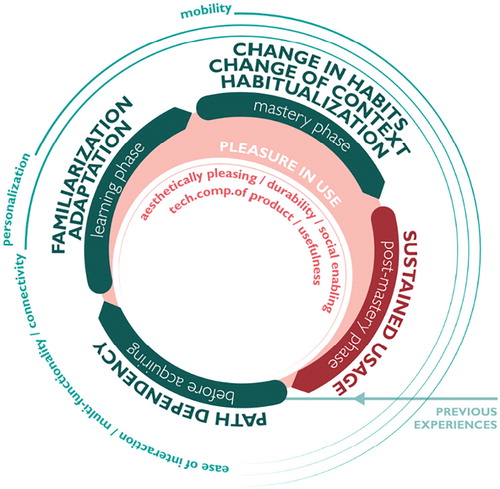 In this paper, together with my colleague Yekta Bakırlıoğlu, we worked on the evaluation of the usefulness of the path of long-term user experience model in the design process.
In this paper, together with my colleague Yekta Bakırlıoğlu, we worked on the evaluation of the usefulness of the path of long-term user experience model in the design process.
User experience evolves in accordance with users’ attitudes, habits, and personality, as well as their prior experiences. Even though there are attempts to holistically frame the long-term experience of interactive products, there is still debate on how to guide designers in the design process of those products. To tackle this issue, this paper proposes the usage of Path of Long-Term User Experience (PLUX) model in the design process.
To interrogate the usefulness of the model, we conducted two studies. First, we adopted, adapted and tested the applicability of the backcasting approach, together with the visual materials that could be used in the design process. Following this, we tested the effectiveness of using the PLUX model as a guidance tool in designing interactive products. The PLUX model together with the backcasting approach helps designers to better ground their decisions in the design process and to find ways to enrich long-term user experience. The stages of user experience as well as the human and product-related qualities of the PLUX model facilitated in-depth reflection and espoused creative interpretations of these qualities for ideation.
